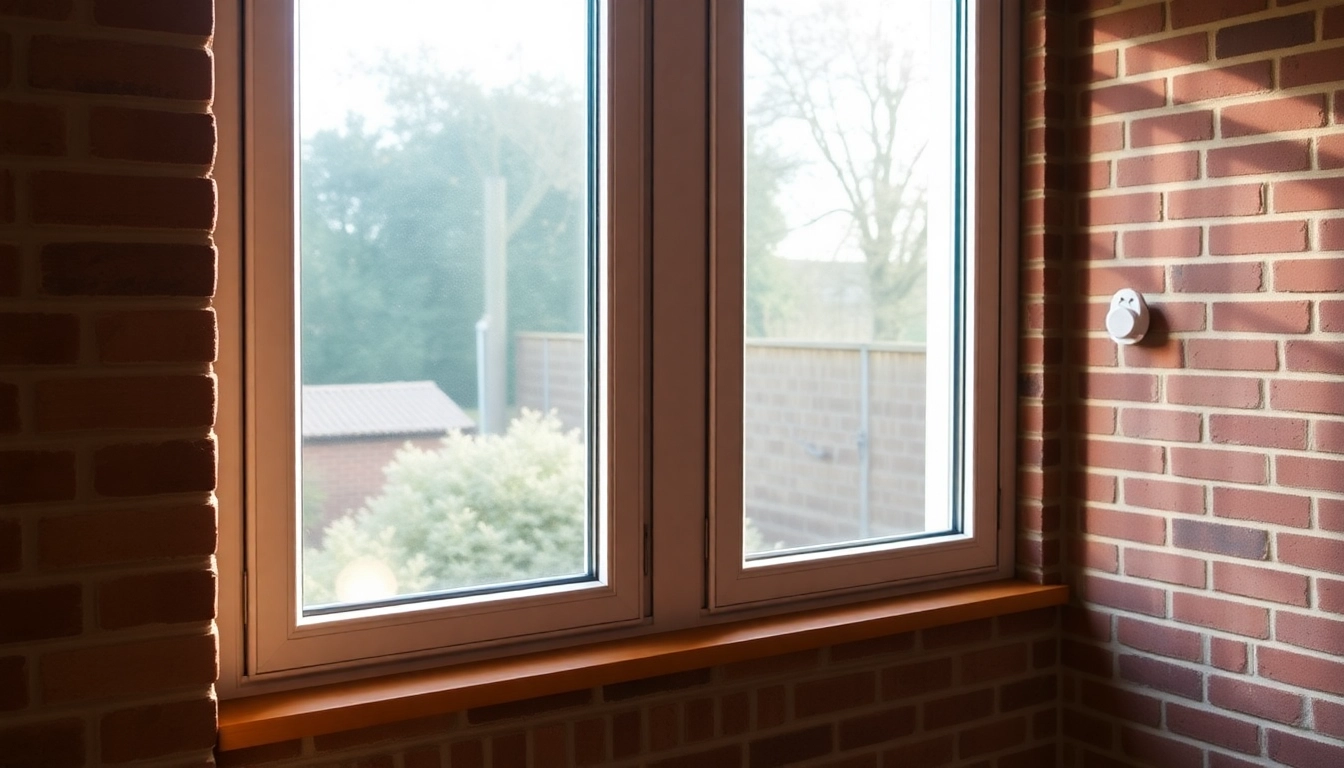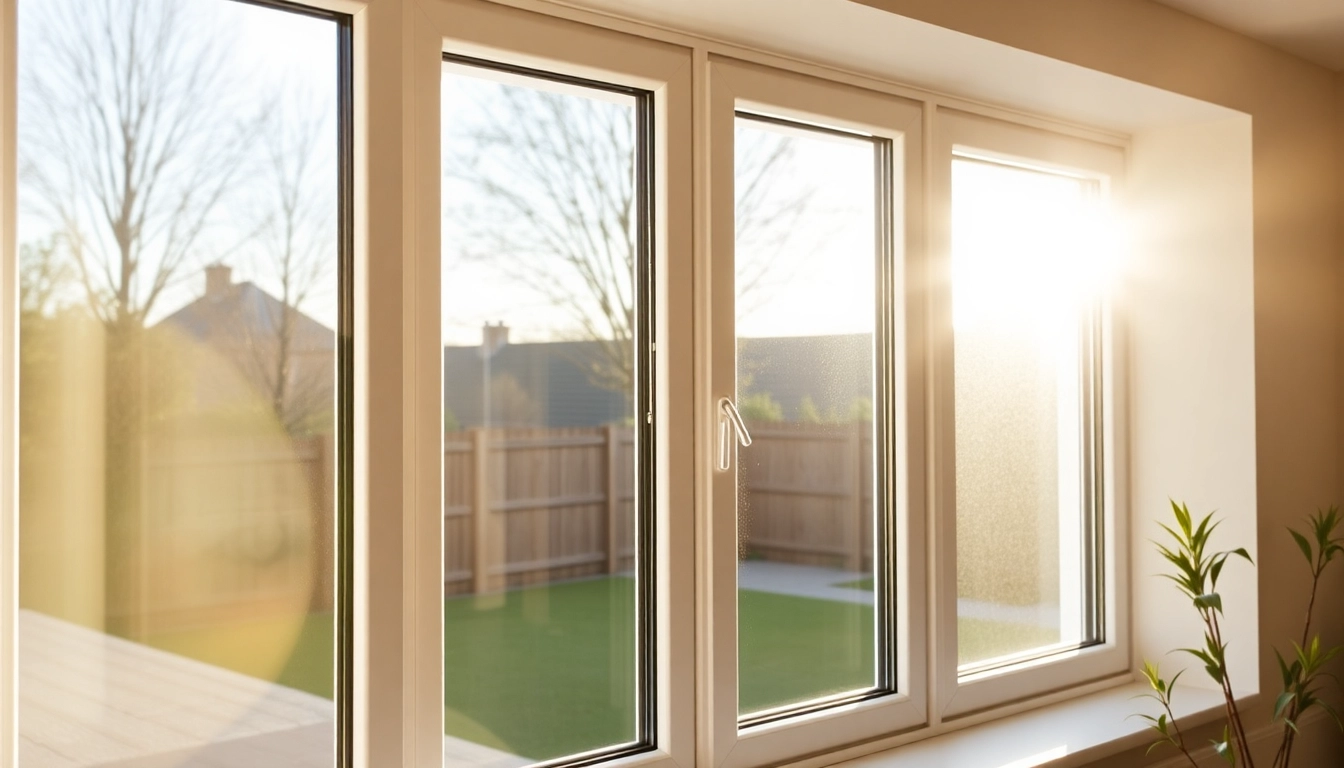Understanding the Benefits of Energy-efficient Sash Windows
In the pursuit of modern home comfort and sustainability, energy-efficient sash windows have become an essential feature for homeowners aiming to reduce their carbon footprint while enhancing their living environment. Sash windows, traditionally admired for their aesthetic appeal and historical significance, can be transformed into highly efficient, modern installations that significantly cut energy loss. When you opt for Energy-efficient sash windows, you’re investing in a solution that combines timeless design with cutting-edge insulation technology, ensuring your home remains warm in winter, cool in summer, and cost-effective year-round.
Thermal Insulation and Home Comfort
The cornerstone of energy-efficient sash windows lies in their ability to maximize thermal insulation. Traditional sash windows, especially single-glazed versions, are notorious for their heat loss. Heat escapes through the glass and frame gaps, leading to drafts and temperature fluctuations. Modern energy-efficient sash windows incorporate advanced glazing options, such as double or triple glazing with Low-Emissivity (Low-E) coatings, to dramatically improve thermal performance.
Double-glazed sash windows, for instance, consist of two panes of glass separated by a sealed air or gas-filled space. This design reduces heat transfer and acts as a barrier against cold drafts. Furthermore, Low-E coatings, which are microscopically thin metallic layers applied to the glass surface, reflect thermal radiation back into the room, further enhancing insulation. Homeowners have reported savings of up to 20% to 30% on heating bills after upgrading to high-performance sash windows.
Beyond glazing, the frame material plays a crucial role in insulation. Timber, uPVC, and composite materials each have unique insulating properties, with timber often regarded as the most thermally efficient due to its natural insulating characteristics when combined with quality glazing.
Long-term Cost Savings
While the initial investment in energy-efficient sash windows can be higher than traditional options, the long-term financial benefits are substantial. Improved thermal insulation reduces reliance on central heating and air conditioning systems, leading to lower energy bills over the lifespan of the windows. According to industry studies, homes equipped with high-rated sash windows can see decreases in energy consumption by as much as 35–40%.
Additionally, energy-efficient sash windows can increase a property’s value. Homes with certified high-performance windows appeal to eco-conscious buyers and can command premium prices. Maintenance costs are also minimized in modern designs—uPVC and aluminum frames require less upkeep than traditional timber, and many modern sash windows feature durable seals and hardware that extend service life.
From a budget perspective, homeowners should view initial costs as an investment in comfort, savings, and environmental impact, often recouped within several years through reduced energy bills.
Environmental Impact and Sustainability
Making the switch to energy-efficient sash windows contributes positively to environmental sustainability. By lowering energy consumption, you reduce the demand for fossil fuels, decrease greenhouse gas emissions, and lessen your home’s overall carbon footprint. Incorporating sustainable materials, such as responsibly sourced timber or recycled uPVC, further enhances the eco-friendliness of these windows.
In addition, modern sash window manufacturing emphasizes durability and recyclability. The use of eco-friendly coatings, minimalist hardware, and components designed for longevity reduces waste and ensures that your investment supports greener building practices.
Moreover, the rise of energy-efficient sash windows aligns with wider industry shifts toward sustainable building standards and Energy Performance Certificates (EPCs). This makes such upgrades not only a practical choice but a responsible one for environmentally conscious homeowners.
Choosing the Right Sash Window Features for Energy Efficiency
Glazing Options: Double, Triple, and Low-E Coatings
Selecting the appropriate glazing is fundamental to maximizing sash window energy efficiency. Double glazing is now standard, offering significant improvements over single-glazed models. For even greater performance, triple glazing provides an additional layer of insulation, albeit at a higher cost.
Low-E coatings are vital in ensuring high thermal efficiency. These coatings reflect heat back into the home while still allowing natural light in, minimizing heat loss with minimal adverse impact on daylight quality. They also filter out harmful UV rays, protecting interior furnishings.
The choice between double and triple glazing depends on your climate, home size, and budget. For colder regions or highly insulated homes, triple glazing can provide superior comfort and savings, but double glazing with Low-E coatings remains an effective and cost-efficient solution in most cases.
Frame Materials and Their Insulating Qualities
The frame material is equally critical to energy performance. Timber frames naturally possess good insulating properties, especially when combined with well-fitted glazing. They also offer aesthetic appeal and align well with traditional architecture.
uPVC frames have advanced in recent years to offer excellent thermal performance, often with internal foam filling or thermal breaks that prevent heat conduction. They require minimal maintenance and provide a durable, cost-effective solution.
Composite frames—combining timber outer layers with uPVC or aluminum cores—offer the best of both worlds: aesthetic authenticity, excellent insulation, and durability.
When choosing frame materials, consider factors such as climate, maintenance willingness, and aesthetic preferences. Ensure that all frames are properly sealed and fitted to prevent drafts and thermal bridging.
Seals and Draught Proofing Techniques
One of the most cost-effective yet impactful methods to boost sash window energy efficiency is proper sealing and draught proofing. Gaps around the sash, lock mechanisms, and traditional cord pulleys can allow cold air to infiltrate.
Modern sash windows incorporate high-quality brushes, weatherstrips, and seals that effectively prevent drafts. Additionally, professional installation of draught-proofing measures involves installing compression seals around sashes and employing weatherstripping on movable parts.
For existing older sash windows, retrofit solutions such as internal draft seals or secondary glazing can significantly reduce heat loss. Proper sealing not only improves comfort but also extends the lifespan of your window hardware by reducing wear caused by drafts.
Installation and Upgrade Strategies
Secondary Glazing and Modern Treatments
Secondary glazing involves installing a second layer of glazing on the interior side of existing sash windows, creating an additional barrier against heat loss. This is especially beneficial for listed buildings where preserving the original sash is necessary.
Modern secondary glazing options include magnetic or clip-on units, which are easy to install and remove. These systems dramatically improve insulation—achieving an A+ energy rating—without altering the building’s façade.
Window films are another modern treatment; reflective or insulating films can be applied directly to the glass to reduce heat transfer. These films are cost-effective and simple to implement, making them popular for retrofitting older sash windows.
Professional Fitting for Optimal Performance
Achieving maximum energy efficiency requires precise installation by trained professionals. Proper fitting ensures that seals are airtight, hardware functions smoothly, and the sash aligns perfectly within the frame.
Poor installation can lead to gaps, drafts, and uneven operation, negating the benefits of high-quality components. An expert installer will perform detailed assessments, measure thermal performance, and recommend tailored solutions such as upgraded hardware or custom glazing options.
Investing in professional fitting is crucial, particularly when retrofitting older sash windows, to ensure that the enhancements provide the expected savings and comfort.
Retrofitting Old Sashes for Energy Efficiency
Upgrading historic or existing sashes involves several retrofit strategies. For example, installing high-performance draught-proofing, replacing ponded or outdated glazing with modern, low-emissivity sealed units, or adding internal secondary glazing can transform the thermal performance.
Special attention should be given to preserving the architectural integrity of the windows. Custom-made sealed units that fit existing sash profiles, combined with weatherproofing and airtight seals, can significantly improve insulation without compromising aesthetics.
Furthermore, some homeowners opt for sash window restoration, which involves repairing or upgrading sashes, replacing cords, and improving hardware, to extend usability and efficiency.
Maintaining and Enhancing Your Energy-efficient Sash Windows
Regular Inspection and Seal Checks
Routine maintenance is essential to sustain the efficiency of your sash windows. Regularly inspect the seals, hardware, and glazing for signs of deterioration, such as cracks, gaps, or warping.
Seals and weatherstripping should be replaced as needed to maintain airtightness. Well-maintained hardware ensures smooth operation and prevents accidental misalignment, which could introduce inefficiencies.
Creating a schedule for annual or bi-annual checks helps identify issues early, preventing costly repairs and ensuring your windows continue to deliver optimal performance.
Applying Window Films and Insulation Films
Applying reflective or insulating window films is an effective way to enhance existing sash windows. These films can reflect infrared radiation, reduce heat gain in summer, or prevent heat escape in winter.
It is a non-invasive, reversible process suitable for historic properties. Films come in various options, including transparent, low-reflectivity coatings designed to preserve natural daylight and appearance.
Proper installation ensures the films do not peel or bubble, maintaining the window’s aesthetic appeal while boosting thermal insulation.
Choosing Compatible Window Coverings
Appropriate window coverings further improve energy efficiency. Insulated cellular shades, for example, contain air pockets that trap heat and provide excellent R-values. These shades can be integrated with sash windows for added insulation.
Thick curtains or thermal blinds also offer barrier against heat loss, especially during the coldest months. When selecting coverings, consider materials that balance insulation with aesthetics, ease of operation, and compatibility with the sash window mechanism.
Combining high-performance coverings with sealed and glazed sash windows creates a comprehensive approach to maintaining interior comfort and reducing energy costs.
Performance Metrics and Certification
Understanding Energy Ratings and Labels
Energy ratings for windows, similar to those for appliances, help consumers assess thermal performance. These ratings typically range from A++ (most efficient) to G (least efficient). Modern sash windows with high-quality glazing and sealing can achieve ratings up to A+ or A++, indicating excellent insulation.
Certifications such as Passivhaus and compliance with standards like BS EN ISO 10077 provide additional assurance of thermal performance. When purchasing sash windows, always seek documentation evidencing energy ratings and compliance to ensure you are making an informed investment.
Measuring Energy Savings and Efficiency Gains
Quantifying the efficiency gains from upgrading to energy-efficient sash windows involves monitoring energy bills, conducting post-installation performance tests, and employing home energy audit tools. Many manufacturers provide Energy Performance Certificates (EPCs) reflecting improvements.
Homeowners can install simple energy meters or thermometers to track indoor temperatures and energy consumption over time, comparing pre- and post-upgrade data to gauge savings.
Consistent measurement and documentation not only help optimize further upgrades but also add value during property appraisal or sale.
Certifications to Look for When Purchasing
When selecting new sash windows, look for certifications verifying their energy efficiency. Certifications such as the British Standard BS EN ISO 10077 or the European Union’s Energy Label are valuable indicators. Additionally, products with recognized eco-labels or endorsements from industry bodies ensure adherence to high-performance standards.
Prioritize suppliers who provide transparent documentation, warranty coverage, and who adhere to local building regulations and conservation guidelines, particularly for historic or listed properties.

